12 Secluded Islands With Landscapes Straight Out Of Mars

Ever dreamed of exploring Mars—but without leaving Earth? Turns out, you kind of can. Scattered across our oceans are islands so surreal, so wildly untouched, they feel like scenes from a sci-fi film. Think crimson sands, wind-carved canyons, volcanic craters, and rock formations that look more like alien sculptures than natural geology.
I’ve rounded up 12 of the most mind-blowing islands where Earth dials up the drama and delivers serious interplanetary vibes. Some are tucked away in the Arctic Circle, others shimmer in the heat of the Indian Ocean. Each one is remote, raw, and ridiculously photogenic.
So if you’re craving an adventure that feels truly out of this world—without the million-dollar rocket ticket—this list is for you. Ready to leave Earth behind (just a little)?
1. Socotra Island, Yemen
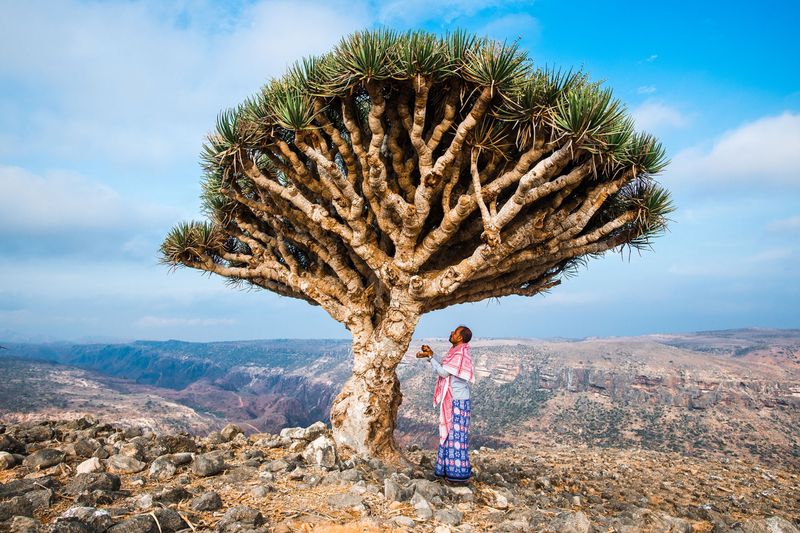
Dragon blood trees dot the landscape of Socotra, creating an alien forest unlike anything else on Earth. These umbrella-shaped trees with red sap evolved in isolation for millions of years, giving the island its reputation as the “most alien-looking place on Earth.”
Wind-sculpted rocks and barren plateaus stretch across this UNESCO World Heritage site, complementing the bizarre vegetation. Approximately one-third of all plant life here exists nowhere else on our planet.
When walking through Socotra’s misty highlands, you’ll understand why NASA scientists use it to study potential Mars habitats. The isolation has preserved this living time capsule that feels more science fiction than reality.
2. Lanzarote, Canary Islands
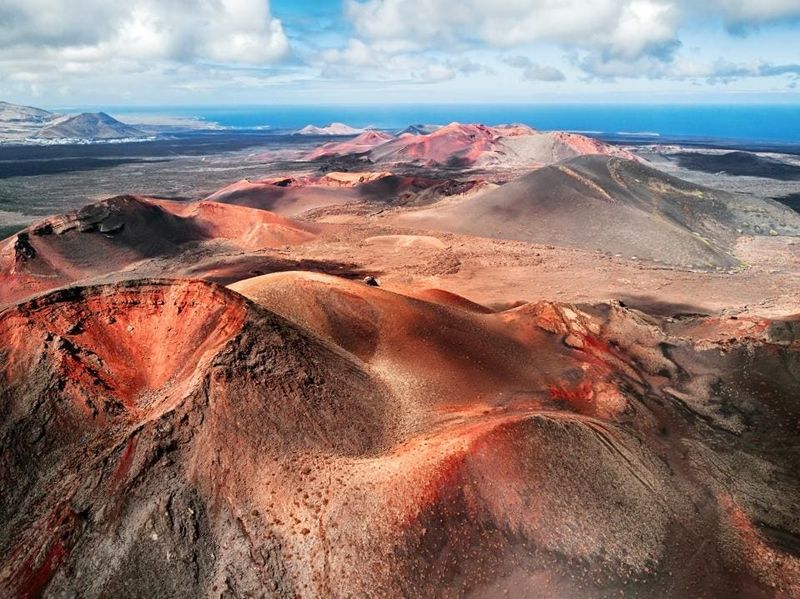
Fire mountains rise from blackened lava fields on Lanzarote, creating a striking red and black landscape that mirrors Mars’ volcanic terrain. The Timanfaya National Park, formed by volcanic eruptions in the 1730s, features over 100 volcanoes across its scorched surface.
Did you know? The soil here is so similar to Martian soil that scientists test space equipment in this natural laboratory. Heat just below the surface remains so intense that staff can start fires using only hay dropped into shallow holes!
Walking through these crimson fields feels like traversing another world. The stark beauty of this UNESCO Biosphere Reserve makes it easy to forget you’re still on Earth.
3. Bartolomé Island, Galápagos

Volcanic spires reach toward the sky on Bartolomé Island, creating one of the most photographed scenes in the Galápagos. The island’s rusty-red surface and scattered volcanic cones make it a dead ringer for Mars – just add water.
Hiking to the summit reveals a panorama of lava formations, cinder cones, and spatter cones spreading across the small 1.2 square kilometer island. Marine iguanas – creatures that look prehistoric – crawl across the scorched rocks, enhancing the extraterrestrial feel.
If Mars had beaches, they might look like the golden shores here that contrast dramatically with the red landscape. The island formed relatively recently, explaining why vegetation remains sparse and the terrain so raw.
4. Vulcano Island, Italy
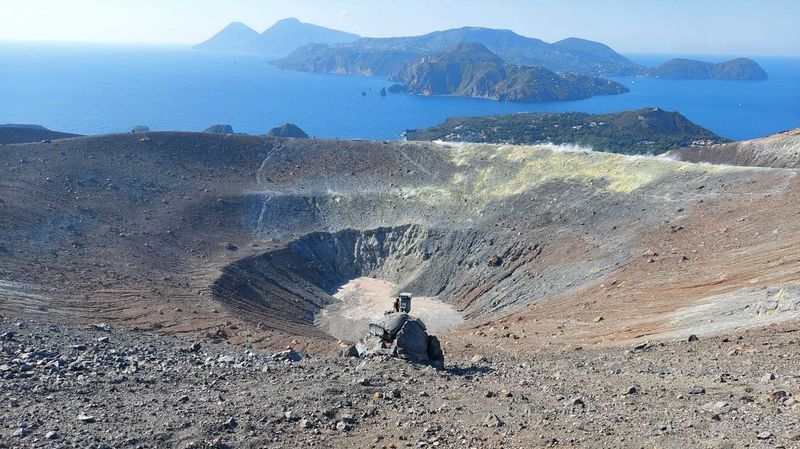
Sulfurous steam rises from bubbling mud pots across Vulcano, creating an apocalyptic landscape worthy of science fiction. This small Aeolian island north of Sicily gave us the word “volcano” itself, and its smoldering terrain continues to live up to the name.
The Gran Cratere dominates the island with its 500-meter-wide smoking crater that last erupted in 1890. Yellow sulfur deposits coat the black volcanic soil, creating color contrasts that mimic Martian mineral deposits seen in NASA photographs.
When visiting, the powerful rotten-egg smell from hydrogen sulfide gases reminds you that you’re standing on active geothermal terrain. At night, the faint glow from fumaroles creates an eerie red glow reminiscent of Mars’ dusty atmosphere.
5. Deception Island, Antarctica
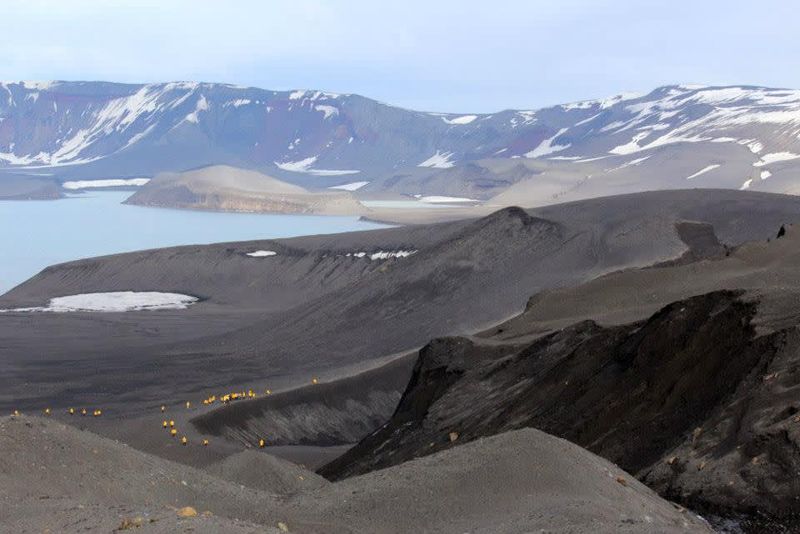
Hidden within Antarctica lies a horseshoe-shaped island with beaches of black volcanic sand and steaming shorelines. Deception Island’s collapsed volcanic caldera creates a protected harbor where geothermal activity warms the waters enough for the brave to swim while surrounded by icebergs.
Abandoned whaling stations rust against the stark landscape, adding a post-apocalyptic feeling to this already alien terrain. The contrast between snow, ice, and volcanic black sand creates patterns that resemble satellite images of Mars’ polar regions.
Though technically on Earth, this island experiences weather so extreme and landscapes so barren that NASA has used it to test Mars mission equipment. The rust-colored oxidized rocks scattered across black volcanic fields complete the Martian illusion.
6. Ascension Island, South Atlantic
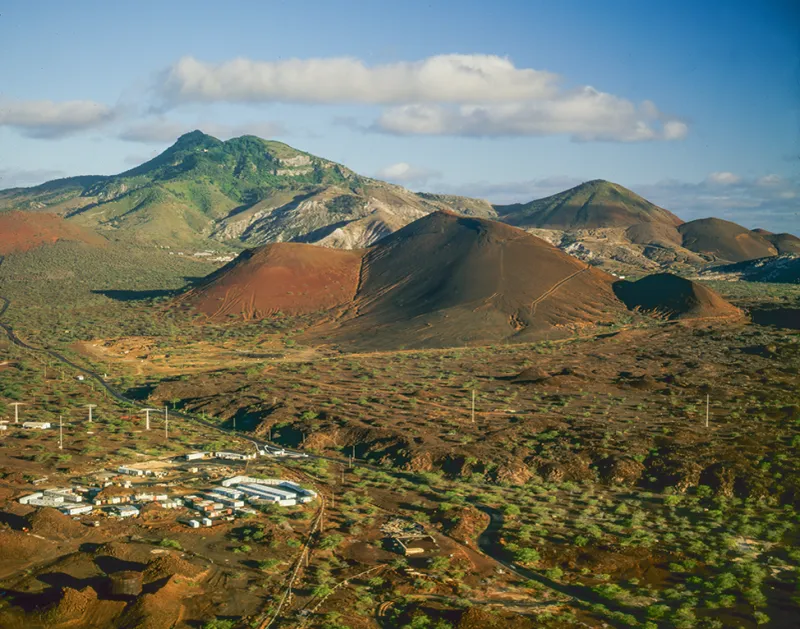
Forty volcanoes rise from this remote South Atlantic outpost, creating a landscape that feels more like Mars than Earth. Green Mountain stands in stark contrast to the surrounding red plains and black lava fields that dominate this British Overseas Territory.
Ascension Island sits so far from anywhere else that Charles Darwin and botanist Joseph Hooker used it for a planetary terraforming experiment in the 1800s, transforming parts of the barren volcanic landscape into lush forest. The experiment created a bizarre juxtaposition where alien desert meets manufactured jungle.
When exploring the lava tunnels and cinder cones of the eastern side, you’ll encounter landscapes NASA scientists study for Mars mission preparation. The island’s isolation makes it perfect for stargazing – adding to the cosmic experience.
7. Iceland’s Westman Islands
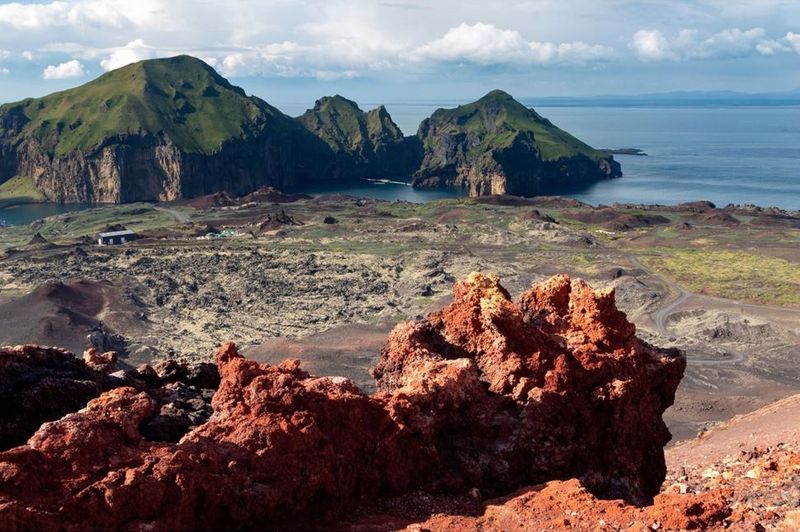
Born from fire in 1963, Surtsey Island emerged from the Atlantic through underwater volcanic eruptions that lasted four years. This youngest member of Iceland’s Westman archipelago remains off-limits to most humans, preserving its pristine otherworldly landscape for scientific study.
The main inhabited island, Heimaey, features its own Mars-like credentials with a landscape transformed by the 1973 Eldfell eruption. Half-buried houses remain partially covered by volcanic ash, creating an eerie time capsule of the disaster.
Across the archipelago, black sand beaches contrast with rust-colored volcanic cones. From certain vantages, the islands appear as a series of red-tinged craters rising from the ocean – a scene that wouldn’t look out of place in science fiction films set on distant planets.
8. Santorini’s Nea Kameni, Greece
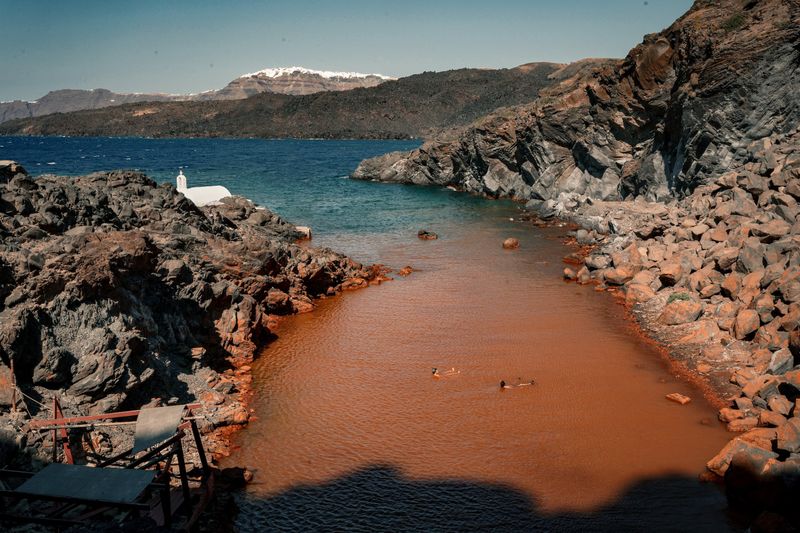
Within Santorini’s famous caldera floats a young volcanic island that looks nothing like the whitewashed buildings nearby. Nea Kameni emerged from the sea in 1707 and continues growing through periodic eruptions, creating a stark landscape of red and black volcanic rock.
Active fumaroles release sulfurous gases across the island, creating yellow mineral deposits that mimic the sulfur features identified on Mars. Walking across Nea Kameni feels like traversing another planet – the crunch of volcanic gravel underfoot and the complete absence of vegetation heighten the otherworldly sensation.
Though surrounded by the brilliant blue Aegean, this uninhabited island remains barren and hostile to life. Scientists monitor the island constantly, as it represents one of the most active volcanic centers in Europe – much like how NASA monitors Mars for changes.
9. Pico Island, Azores
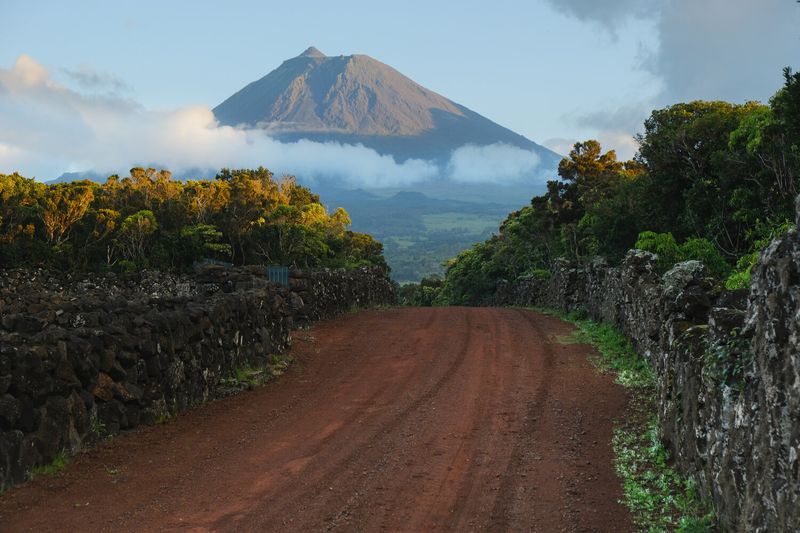
Mount Pico dominates this Portuguese island, creating a landscape where hardened lava flows form bizarre patterns across the terrain. The island’s vineyards, grown in small stone-walled enclosures built directly on black lava fields, create a checkerboard pattern visible from space.
Exploring the island’s caves reveals subterranean lava tubes with formations eerily similar to those scientists hope to find on Mars. These tubes could potentially shelter future human habitats on the Red Planet, making Pico a natural laboratory for space research.
When fog rolls in across the volcanic landscape, visibility drops to mere feet, and the world transforms into an alien environment. The dark volcanic soil, punctuated by pioneer plants that somehow survive in this harsh terrain, completes the Martian illusion.
10. Jeju Island, South Korea
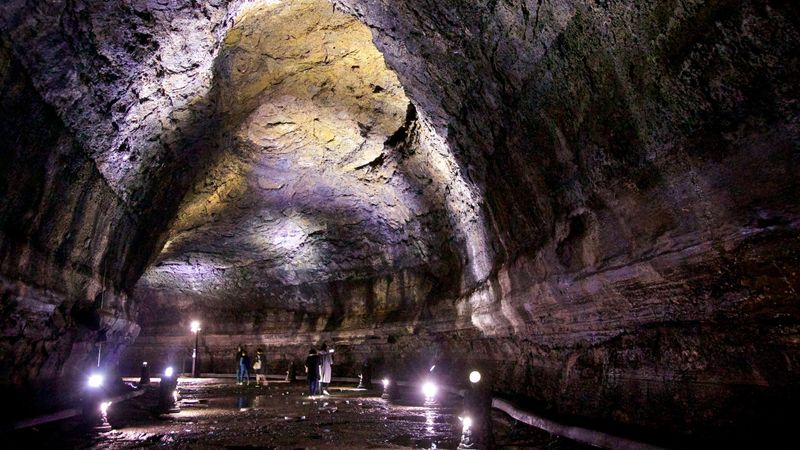
Beneath Jeju’s lush exterior lies an otherworldly landscape of caves and volcanic formations that mirror what scientists expect to find on Mars. The UNESCO-listed Manjanggul Cave stretches for 8 kilometers underground, representing one of the world’s longest lava tubes – exactly the type of formation NASA seeks on Mars for potential human habitation.
Above ground, over 360 parasitic volcanic cones called oreum dot the landscape surrounding the massive shield volcano that formed the island. The red soil of these cones contrasts dramatically with the island’s greenery, creating pockets of Martian-like terrain.
Though Jeju appears verdant today, its foundation remains alien. The volcanic columns of Jusangjeolli Cliff formed through the same processes that created Mars’ famous columnar basalt formations, making it a geological twin to features on the Red Planet.
11. Easter Island (Rapa Nui), Chile
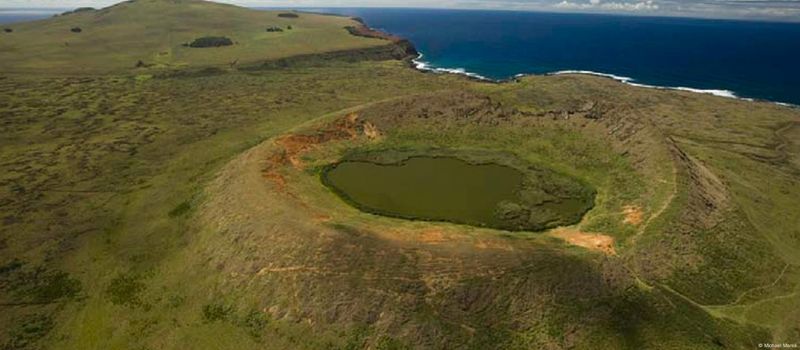
Beyond the famous moai statues lies a landscape so barren and wind-swept it resembles Martian plains. Easter Island’s treeless expanses, red soil, and volcanic craters create an otherworldly backdrop for the mysterious stone figures that made it famous.
The extinct volcano Rano Raraku served as the quarry for the moai, its crater now an eerie landscape of half-carved and abandoned statues emerging from the earth. This scene evokes the strange rock formations spotted by Mars rovers that sometimes appear artificially shaped.
Did you know that Easter Island once supported lush forests before human-caused ecological collapse? This transformation mirrors scientific theories about Mars’ own evolution from a potentially habitable world to the barren planet we see today. Standing on the island’s windswept plains feels like visiting a planet in the final stages of environmental change.
12. Komodo Island, Indonesia
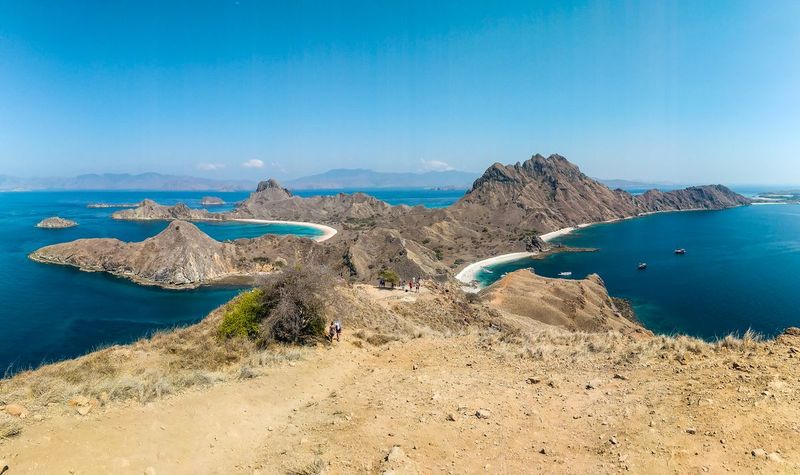
Hidden beyond Komodo’s famous dragons lies a landscape of rust-colored hills and savanna that bears an uncanny resemblance to Martian terrain. The island’s volcanic origins created a unique environment where red soil dominates, especially visible during the dry season when vegetation withers.
Pink Beach gets its distinctive color from red coral fragments mixed with white sand – creating a shoreline that resembles enhanced-color images of Mars where different mineral deposits create varied hues. Inland, the barren hills take on an even more Martian appearance.
Though the presence of the world’s largest lizards might seem un-Mars-like, their prehistoric appearance actually enhances the feeling of being on another planet or in another time. The island’s isolation has preserved this unique ecosystem that feels completely removed from the rest of Earth.
